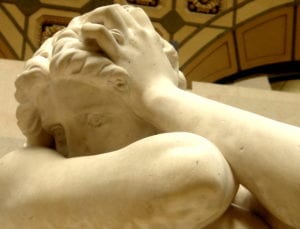
An Old Testament KnoWhy for Gospel Doctrine Lesson 4: “Because of My Transgression My Eyes Are Opened” (Moses 4; 5:1–15; 6:48-62) (JBOTL04B). See the link to the video supplement to this lesson at the end of the article under “Further Reading.”
Question: After the Fall, God told Eve: “thy desire shall be to thy husband, and he shall rule over thee.” However, some say that the words “rule over” should be translated “rule with.” Which translation is correct?
Summary: A modern English translation makes the meaning of this difficult phrase clear: “You will want to control your husband, but he will dominate you.” Looking at the verse in context, it is evident that the Lord is not telling the couple how they should treat each other, but rather describing a tragic tendency in mortal marriages that they must avoid. As further evidence for this interpretation, note that the same Hebrew terms for “desire” and “rule” that describe a relationship of competition and rancor will later reappear in God’s warning to Cain: “Satan desireth to have thee; … And thou shalt rule over him.” In an honest effort to make sense of the troubling English translation of “rule over” in the King James Version, some have suggested that it should be read instead as “rule with.” Unfortunately, the “rule with” translation does not hold up under scholarly scrutiny. For example, in her BYU Masters Thesis, RoseAnn Benson argued conclusively that the “rule with” translation should be abandoned. In every occurrence of the underlying Hebrew she examined the phrase is best understood as “rule over,” as when a king rules over his subjects. This further confirms the idea that the verse is describing broken marriage relationships that would become a common tendency in the fallen world, with each spouse contending to “rule over” the other. It’s obvious that God did not intend Adam and Eve’s marriage to work that way. Instead, as the Proclamation on the Family explains, “fathers and mothers” — both then and now — “are obligated to help one another as equal partners.”
The full article may be found at the Interpreter Foundation website: KnoWhy OTL04B — Was Adam Meant to “Rule Over” or “Rule With” Eve?
For a video supplement to this lesson, see “The Tree of Knowledge as the Veil of the Sanctuary” on the FairMormon YouTube channel: https://www.youtube.com/watch?v=K-B1FeOcTZ8


